1. Real-time Anomaly Detection
AI-driven anomaly detection systems continuously monitor cargo sensor data (e.g. temperature, humidity, shock) to identify deviations in real time. These models learn normal patterns for different goods and flag any sudden out-of-bound readings so that operators can intervene immediately. By catching issues like unexpected temperature spikes or excessive vibration early, real-time anomaly detection prevents minor issues from escalating into full-fledged damage. This proactive monitoring helps maintain cargo integrity and reduces spoilage or damage by enabling prompt corrective actions (such as adjusting equipment or routing) the moment an anomaly is detected.
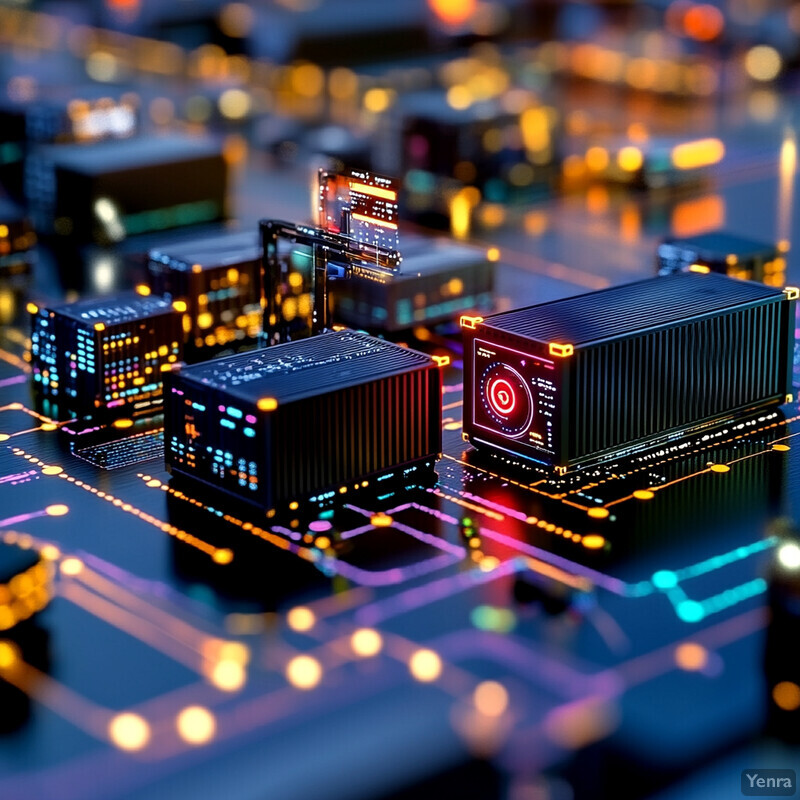
Advanced machine learning models have demonstrated high accuracy in detecting such anomalies. For example, a 2024 study of vaccine cold storage used a deep learning model on streaming sensor data and achieved about 92% accuracy in identifying temperature faults in real time. Shipping leaders are deploying similar technology: Maersk’s “Remote Container Management” system continuously tracks conditions in refrigerated containers and automatically triggers alerts at the first sign of an out-of-range condition. Early-warning systems like these allow immediate responses (e.g. boosting refrigeration or alerting crew), which industry reports credit with significantly reducing incidents of spoiled or damaged cargo in transit.
2. Predictive Spoilage Analytics
AI enables logistics providers to predict when perishable cargo is likely to spoil or degrade by analyzing patterns in historical and real-time condition data. Machine learning models factor in temperature history, humidity, transit time, and even microbial growth patterns to estimate remaining shelf-life. This predictive spoilage analytics lets shippers take proactive measures—such as rerouting shipments, expediting delivery, or adjusting storage conditions—before the goods actually spoil. By anticipating spoilage, companies can minimize waste, ensure higher quality on arrival, and make smarter decisions about distribution (for example, selling or using items that will expire soon first).

Recent applications show that AI can markedly improve shelf-life estimation and reduce waste. A comprehensive 2025 review notes that integrating AI-based models provides a rapid, data-driven alternative to traditional lab tests for shelf-life, allowing real-time estimation of product freshness under dynamic conditions. These models leverage non-destructive data sources like hyperspectral imaging, electronic nose sensors, and temperature logs to predict spoilage onset. In practice, this has yielded significant benefits: one supply chain startup’s AI platform that scores the “freshness” of food in transit has already saved multiple loads of food from spoilage, equating to over 100,000 meals rescued for a hunger relief nonprofit. Additionally, such predictive analytics help cut energy use and carbon footprint by reducing needless refrigeration of already-spoiled goods and by optimizing inventory to use items before expiration.
3. Intelligent Sensor Fusion
AI techniques in cargo monitoring increasingly use sensor fusion, meaning data from many different sensors are combined to give a more holistic and reliable view of cargo conditions. Rather than looking at temperature or humidity in isolation, intelligent sensor fusion algorithms analyze all streams together (temperature, humidity, CO₂, vibration, location, etc.) and understand context. This provides richer insights—for instance, a slight temperature rise might be acceptable if humidity and airflow remain stable. Fusing sensor inputs reduces false alarms and misses, since one sensor can validate or contextualize another. The result is a comprehensive real-time picture of cargo integrity that is greater than the sum of its parts, enabling smarter decisions to protect goods.

Multi-sensor fusion has proven effective in detecting subtle issues and security threats that single sensors might miss. For example, an IoT platform by Sensefinity correlates signals from motion sensors, light detectors, and door monitors to spot abnormal conditions like unauthorized container openings or unscheduled stops in transit. By analyzing these inputs together, the system can immediately distinguish normal events from potential cargo tampering or theft, triggering alarms only when warranted. In environmental monitoring, similar fusion approaches are used: one system can pinpoint a developing cargo fire by detecting an unusual heat increase in conjunction with readings from smoke or gas sensors, identifying the exact container and location of the temperature spike within a ship’s hold. Such fused analysis greatly reduces false positives and ensures operators focus on genuine problems, thereby improving response accuracy in maintaining cargo safety.
4. Computer Vision Damage Detection
Computer vision (CV) systems are now used to automatically detect physical damage to cargo and containers. Using cameras and AI image recognition, these systems inspect goods or shipping containers for dents, cracks, leaks, or other signs of damage that would be hard to catch manually at scale. High-resolution images or video streams from ports, warehouses, or drones are analyzed by deep learning models (such as convolutional neural networks) trained on examples of damages. The AI can flag damaged packages, pallets, or container units in real time, enabling quicker removal or repair. Automating quality inspections with CV not only improves accuracy (AI can notice subtle defects consistently) but also speeds up the process dramatically compared to labor-intensive manual inspections.
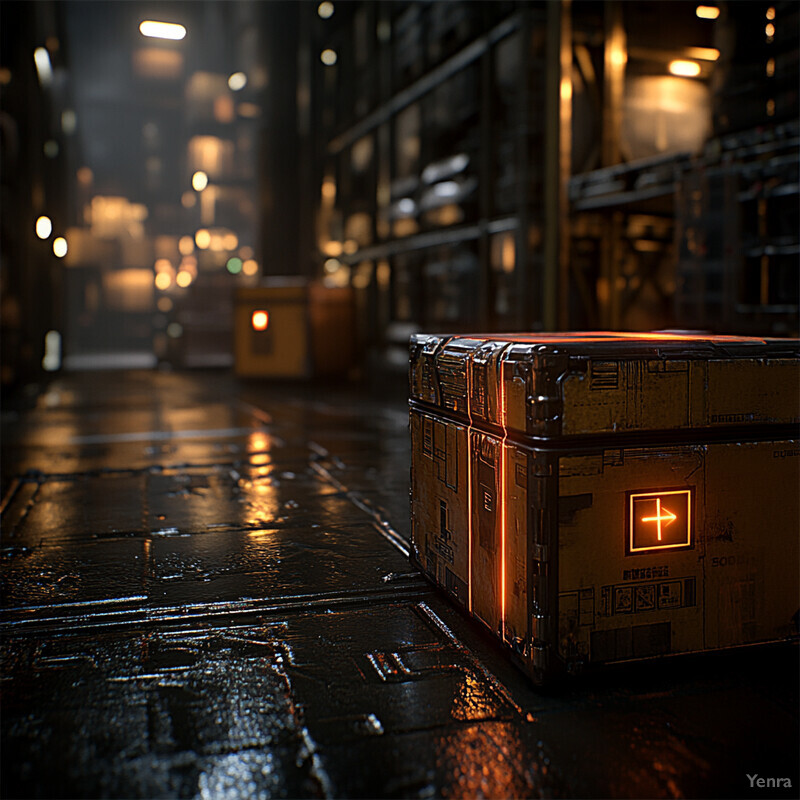
Emerging research demonstrates high accuracy for AI vision damage detection. In one 2025 study, researchers applied a state-of-the-art model (YOLO-NAS) to automate shipping container inspections. The system achieved a mean average precision of about 91.2% in detecting container wall damage, with 92.4% precision and 84.1% recall. This outperformed previous models (like YOLOv8) in the challenging environment of busy seaports. The AI was able to reliably identify dents and structural issues on containers in real time, which is crucial for safety and insurance checks. Logistics companies are also piloting vision systems for package handling—FedEx, for example, uses CV to scan every package for label integrity and potential damage as it moves on conveyors (reducing mis-sorts and claims). Overall, computer vision is becoming a trusted automated “eye” on cargo, catching damages or defects far more efficiently than manual methods.
5. Automated Quality Assessments
AI is increasingly used for automatic quality assessment of cargo, evaluating whether goods meet required standards without manual inspection. These systems use sensors and machine learning to judge product quality attributes—such as the ripeness of produce, the freshness of meat, or the structural integrity of manufactured items—on the fly. For instance, high-speed cameras or scanners on a conveyor can examine each item for surface defects, discoloration, or contamination. AI models trained on what “good” vs “bad” looks like can then sort or flag items that don’t meet quality criteria. By deploying such automated quality checks at packing houses, warehouses, or ports of entry, companies can ensure only goods that pass quality thresholds move forward, and do so at a much faster throughput than human inspection, all while maintaining consistency in standards.
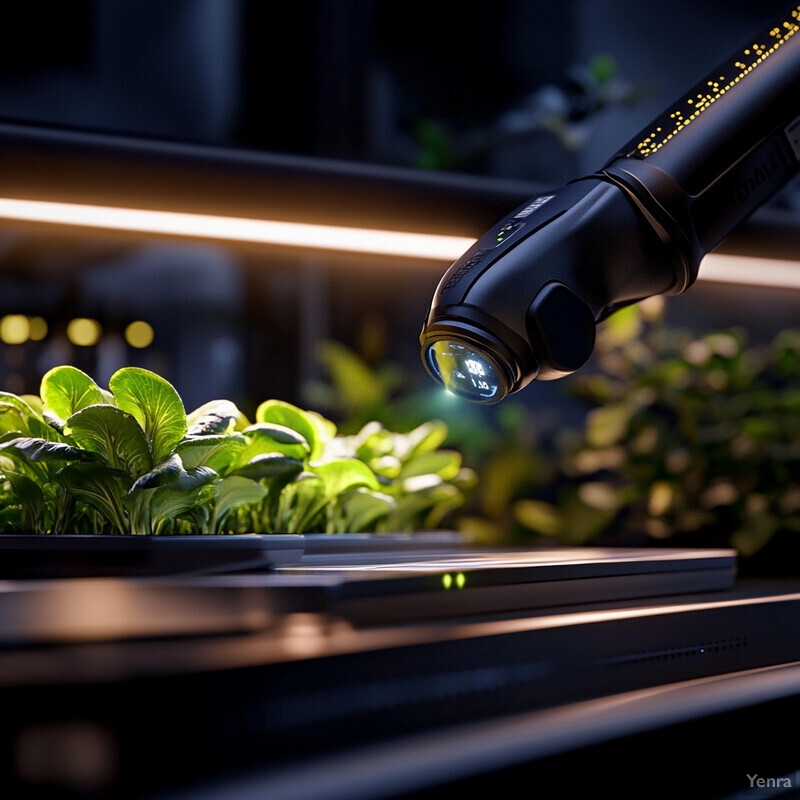
The food industry offers a compelling example: hyperspectral imaging combined with AI is being used to assess internal food quality that human eyes can’t see. In one notable case, shipping giant Maersk invested in a startup’s hyperspectral imaging system that, with machine learning, can instantly determine freshness and ripeness of food passing on a conveyor. This AI-driven system analyzes the spectral signature of, say, avocados or fish to detect properties like sugar content or spoilage onset, allowing bad items to be filtered out automatically. In tech manufacturing, automated optical inspection (AOI) systems use AI to examine circuit boards or devices for tiny flaws, reducing defects by up to 30% according to industry reports. These examples show how AI quality assessment not only catches issues that humans might miss, but also generates real-time data that can be fed back into process improvements, thus continually raising the bar for product quality in the supply chain.
6. Adaptive Threshold Setting
Instead of using fixed alarm thresholds for all situations, AI enables adaptive threshold setting that automatically adjusts alert limits based on context and learned patterns. In cargo monitoring, this means the system can dynamically change the acceptable range for parameters (temperature, vibration, etc.) depending on factors like the specific commodity, historical variations, or environmental context. Early on, thresholds might be broad; as the AI learns the normal fluctuations (e.g., a daily temperature cycle), it narrows the range and becomes more sensitive to true anomalies while ignoring benign variations. Adaptive thresholds help minimize false alarms (which occur if static limits are too strict) and also ensure that real problems are not missed (which can happen if static limits are too lenient). In essence, the alarm system becomes smarter and more context-aware over time.
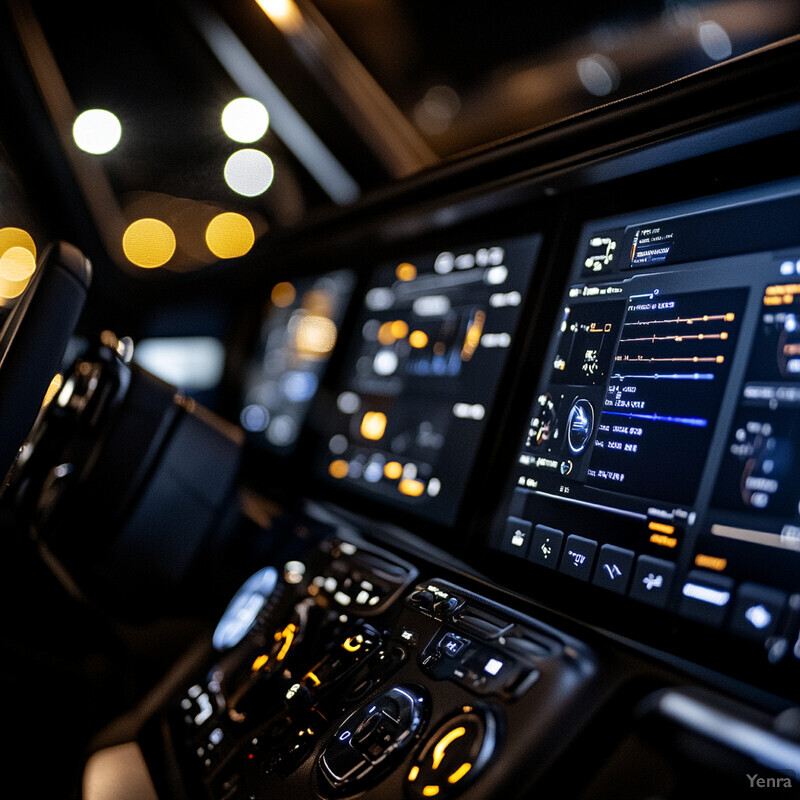
Research shows that adaptive threshold algorithms can significantly improve detection performance. For example, a 2024 study on industrial IoT anomaly detection introduced a dynamic threshold method that continuously recalibrates itself using incoming data. This approach (incorporating a temporal attention mechanism) was found to reduce false alarms and improve anomaly detection accuracy compared to one-size-fits-all static limits. In practice, such techniques allow supply chain monitoring platforms to differentiate between normal seasonal changes and true excursions. A security analysis by Splunk similarly notes that adaptive thresholding “reduces alert fatigue and helps teams direct their energies toward the most critical issues,” by intelligently adjusting when to trigger an alert based on historical baseline and current trends. Many modern supply chain control systems now employ adaptive alert thresholds – for instance, adjusting temperature alert levels for a refrigerated truck based on outside weather and load characteristics – resulting in more reliable and actionable notifications to operators.
7. Predictive Maintenance for Equipment
AI-powered predictive maintenance focuses on the health of the equipment that handles cargo (like refrigerated containers, trucks, cranes, etc.), forecasting when that equipment might fail or require service before a breakdown occurs. By analyzing sensor data (vibration, engine telemetry, temperature of machinery, etc.) and maintenance records, machine learning models can identify patterns that precede a failure. This enables operators to fix or service equipment at a convenient time before it fails during operation. In cargo condition monitoring, predictive maintenance is crucial because equipment failures (say, a reefer container’s cooling unit going down) can directly lead to cargo spoilage. AI helps minimize such risks by scheduling maintenance proactively, thus improving reliability, reducing downtime, and avoiding emergency repairs that disrupt the supply chain.
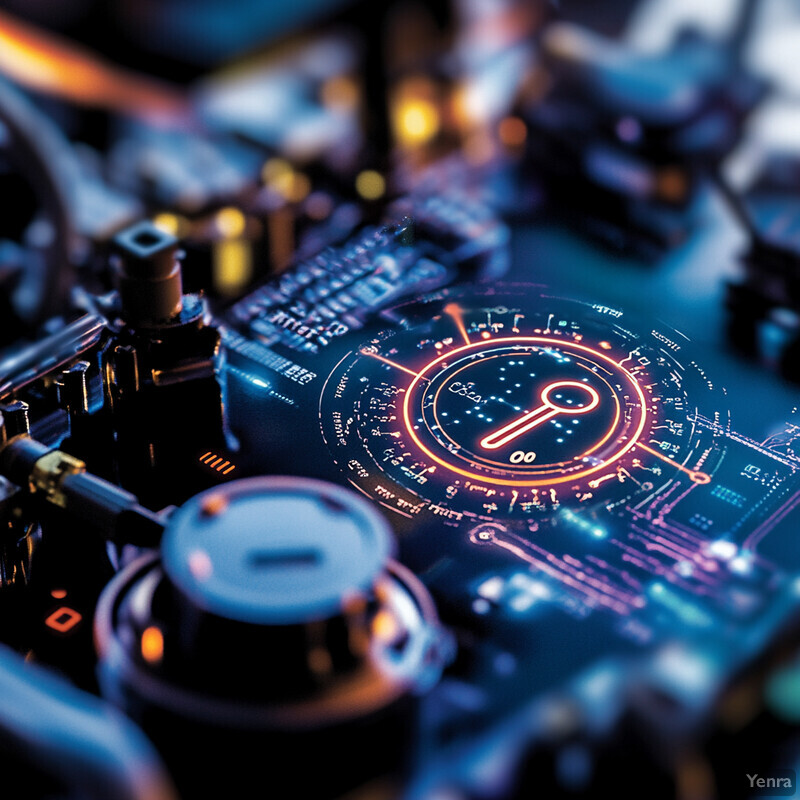
Predictive maintenance driven by AI has shown impressive results in logistics operations. For instance, the Port of Rotterdam implemented an AI system to monitor 42 million data points from port assets annually; it now predicts maintenance needs for over 100,000 assets with about 95% accuracy, cutting unexpected equipment downtime by 20%. This translated to an estimated €31 million in annual savings from prevented disruptions and optimized maintenance scheduling. Similarly, FedEx reported that its AI-based vehicle maintenance platform (analyzing telemetry from 35,000+ delivery trucks) reduced fleet maintenance costs by $11 million per year and cut vehicle breakdowns by 22%. These case studies are echoed by many others – from air cargo handlers using AI to anticipate conveyor failures, to shipping lines predicting when a container’s cooling system will falter and switching it out preemptively. The net effect is a safer, more reliable supply chain with fewer cargo losses due to equipment issues.
8. Smart Alert Prioritization
Cargo monitoring systems often generate many alerts, and AI is helping prioritize them so that the most urgent issues get attention first. Smart alert prioritization means the AI filters and ranks alarms based on severity, context, and likely impact. Rather than inundating staff with a flood of notifications (some of which may be low-impact or even false alarms), an AI system can suppress redundant alerts, group related events, and escalate truly critical ones. It examines patterns – for example, distinguishing a momentary sensor spike from a sustained temperature rise – and it may incorporate knowledge of the cargo’s importance or vulnerability. This leads to a more manageable alert stream, where operators see a dashboard that highlights which containers or shipments need intervention now, versus which notifications are merely informational or can wait.

Effective alert prioritization has been identified as a key operational improvement from AI. Industry surveys indicate that over half of IT and operations teams struggle with “alarm fatigue,” and rank alert prioritization as a top challenge cybersecurity-insiders.com . AI addresses this: by using machine learning on historical event data, adaptive systems learn which anomalies typically precede serious incidents and which do not. For example, an AI-driven supply chain control tower might learn that a brief temperature fluctuation of 1°C is usually harmless if power is quickly restored, so it downgrades or ignores those alerts. Conversely, it might learn that a combination of moderate temperature increase plus rising humidity is a serious red flag and should be flagged as high priority. Splunk’s tech commentary notes that such adaptive alerting “reduces alert fatigue” and ensures teams focus on critical issues first. In practice, companies like Target have deployed AI that sifts through millions of data points to detect only meaningful inventory and supply anomalies – resulting in 40% fewer stockout incidents by directing human attention to the truly important alerts.
9. Supply Chain Risk Management
AI enhances supply chain risk management by predicting and mitigating risks that could affect cargo conditions or delivery. This involves analyzing a wide array of data—from weather forecasts and traffic patterns to supplier reliability and geopolitical news—to foresee potential disruptions. AI systems can model “what-if” scenarios (like port closures or sudden demand spikes) and identify vulnerabilities in the supply chain (such as over-reliance on a single source). By providing early warnings (e.g. predicting that a certain route might be delayed by a storm, or that a supplier might fail to deliver on time), AI allows logistics managers to proactively reroute shipments, secure alternate suppliers, or adjust inventory. In short, AI-driven risk management turns what used to be reactive firefighting into proactive planning, thereby maintaining cargo flow and condition even amid uncertainties.

The Defense Logistics Agency (DLA) notes that AI is particularly beneficial for supply chain risk management (SCRM) by improving visibility and predictive capabilities. According to DLA’s 2024 report, AI tools can “proactively identify, assess, and mitigate risks throughout the supply chain,” including predicting bottlenecks or disruptions and even recommending alternate pre-qualified suppliers when a primary source is in jeopardy. A high-profile example comes from the 2021 semiconductor shortage: Lenovo’s global supply chain AI platform ingested data on geopolitical events, market trends, and manufacturing lead times – it successfully identified the coming chip shortage 4 weeks before its competitors realized the issue, allowing Lenovo to secure critical components in advance. This early warning, powered by AI-driven risk sensing, helped Lenovo maintain production (gaining an estimated 2.3% market share) while others faced stockouts. These cases illustrate how AI can act as an intelligent sentinel, scanning the horizon of numerous risk factors and giving organizations a decisive head start in preventing cargo and supply interruptions.
10. Enhanced Compliance Monitoring
AI is being applied to ensure that cargo shipments comply with regulatory and safety requirements automatically. Enhanced compliance monitoring means AI systems track all the required conditions and documentation in real time and flag any violations. For instance, in pharmaceutical or food logistics, there are strict rules (from agencies like FDA or EU regulators) about temperature control, sanitation, and traceability. AI can continuously compare sensor data against these rules – if a temperature goes out of the allowed range for too long, the system notes a compliance breach and can initiate corrective protocols or documentation. Similarly, AI can check that digital records (bills of lading, chain-of-custody logs) are complete and unaltered. By automating these checks, companies not only avoid costly non-compliance penalties but also maintain thorough, auditable records with far less manual effort.

The integration of IoT and AI is simplifying compliance with new traceability laws. As of 2025, the FDA’s FSMA Rule 204 mandates much more detailed tracking of cold chain foods. In response, companies are deploying AI-linked sensors that gather and analyze compliance data continuously. One solution by Wiliot, for example, uses smart IoT tags that now even sense and analyze humidity levels of grocery products in real time throughout the supply chain. This development helps grocers and food distributors ensure that moisture-sensitive products stay within safe limits (preventing mold or spoilage). According to the tech provider, these capabilities “better ensure the safety, integrity, freshness, and sustainability” of goods by catching out-of-compliance conditions instantly. On the documentation side, AI systems can automatically compare shipping documents with contractual or regulatory requirements – a 2024 industry report noted AI-powered audit tools detected discrepancies in transport records that human auditors missed, reducing compliance errors by an estimated 30%. By combining sensor data monitoring with automated paperwork checks, AI-driven compliance monitoring greatly reduces the risk of shipments falling out of spec without anyone realizing it.
11. Dynamic Route Optimization
AI is advancing route optimization by making it dynamic – continuously adjusting shipping routes in real time to maintain cargo conditions and improve efficiency. Traditional route planning was often static (set before transit), but AI can reroute trucks, ships, or deliveries on the fly in response to factors like traffic congestion, weather changes, or mechanical issues. In terms of cargo condition, dynamic routing might, for example, send a refrigerated truck through a cooler route or with fewer delays on a hot day to protect perishable goods. It may also avoid bumpy roads if shock-sensitive cargo is aboard. By evaluating countless routing scenarios quickly, AI finds the optimal path that minimizes transit time and risk to the cargo. This not only preserves cargo quality but also saves fuel and reduces carbon emissions through smarter logistics.
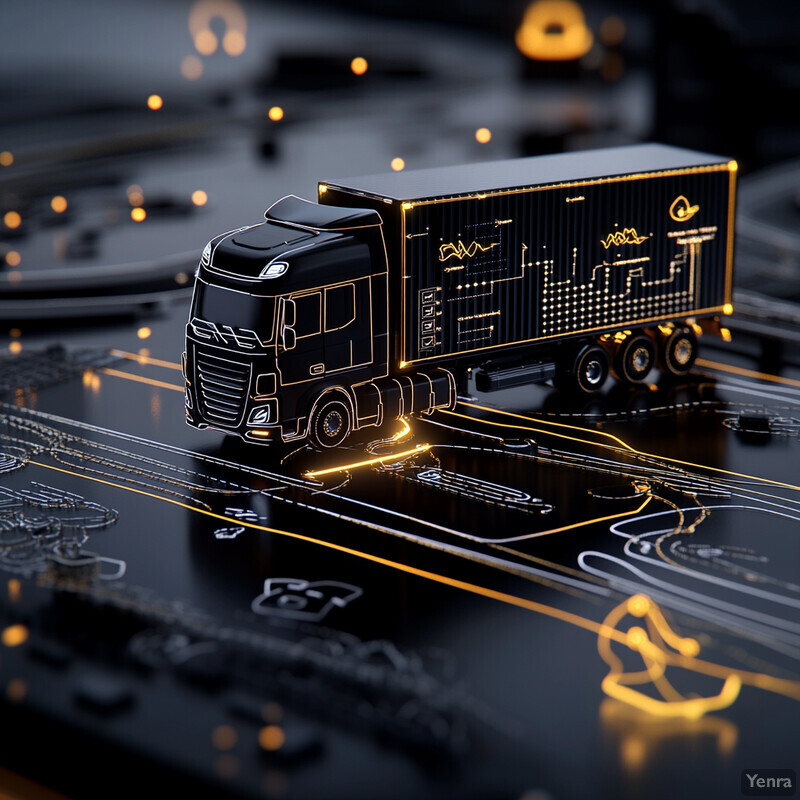
Dynamic, AI-driven routing has yielded substantial gains for major shippers. Walmart reported that its AI route optimization system, which recalculates deliveries for its trucks in real time, avoided 94 million pounds of CO₂ emissions in one year by eliminating over 33 million unnecessary travel miles and bypassing 108,000 known inefficient route segments. This reflects huge efficiency and sustainability improvements. Likewise, Maersk’s ocean logistics division uses AI to optimize shipping lanes and vessel speeds based on weather and sea conditions – in one deployment, vessel fuel consumption dropped 12% and routing optimizations cut total carbon emissions by 5% without affecting delivery times. These outcomes show that AI can process the vast array of inputs (traffic, weather, fuel use, real-time sensor feedback from cargo) far better than humans, constantly tweaking routes for the best result. As a bonus, dynamic optimization often improves delivery times and reliability, since the AI is essentially navigating around problems (like road closures or storms) before they impact the shipment.
12. Scenario Simulation with Digital Twins
Digital twins in supply chain are virtual replicas of physical operations, and AI is using them to run scenario simulations. This means companies create a detailed digital model of their end-to-end logistics network (including warehouses, transport routes, containers, etc.), and then AI can simulate “what-if” scenarios on this model. For example, it can model what would happen if a port shuts down for a week, or if demand surges by 50%, or if a certain refrigeration unit fails. By simulating these scenarios on the digital twin, AI helps identify the best contingency plans (reroute cargo through other ports, adjust inventory, deploy backup equipment, etc.) without disrupting the real world. Essentially, it’s like stress-testing the supply chain in a risk-free virtual environment. This leads to more robust planning – companies can develop playbooks for various disruptions and optimize their responses in advance, thereby preserving cargo conditions and delivery commitments even when surprises occur.

Some large manufacturers and shippers are already leveraging AI-driven digital twins with striking complexity. Procter & Gamble (P&G) built a supply chain digital twin encompassing 3,500+ manufacturing facilities, 600+ distribution centers, and 100,000+ shipping lanes. When the Suez Canal was blocked in 2021, P&G’s AI quickly simulated over 15,000 rerouting scenarios in about 45 minutes, pinpointing an optimal alternative strategy that limited the disruption cost to $18 million (versus an industry average of $42 million for that incident). Similarly, Volkswagen’s digital twin evaluated 27,000+ scenarios during the semiconductor shortage to allocate limited chips across 120+ car models – the AI’s plan prioritized high-margin vehicles and minimized profit impact by an estimated €1.3 billion compared to ad-hoc decisions. Nestlé ran simulations on a potential CO₂ gas shortage (used in beverage production), testing 12,000 different mitigation strategies; the chosen plan maintained 96% of output despite a 40% cut in CO₂ supply. These examples show how AI-powered digital twin simulations allow organizations to “practice” for disruptions and find solutions that keep cargo moving and inventories healthy when real crises hit, significantly improving resilience.
13. Context-Aware Environmental Controls
AI systems can automatically adjust the environmental controls of storage and transport units (like temperature, ventilation, humidity) based on the context to better protect cargo. “Context-aware” means the AI takes into account factors such as the current weather, the cargo’s condition, how long the trip has been, and even the time of day or container occupancy, and then tunes the environment accordingly. For example, if a refrigerated container is traveling through an unusually hot region, the AI might proactively lower the setpoint temperature or increase fan speed to compensate. If sensors detect rising CO₂ levels (from ripening produce), the system might boost ventilation. Unlike static climate control (which keeps one setting throughout), context-aware control continuously fine-tunes conditions so that cargo remains in the optimal range despite external or internal changes. This leads to better quality preservation and energy efficiency, as the system only uses as much cooling or heating as needed given the context.
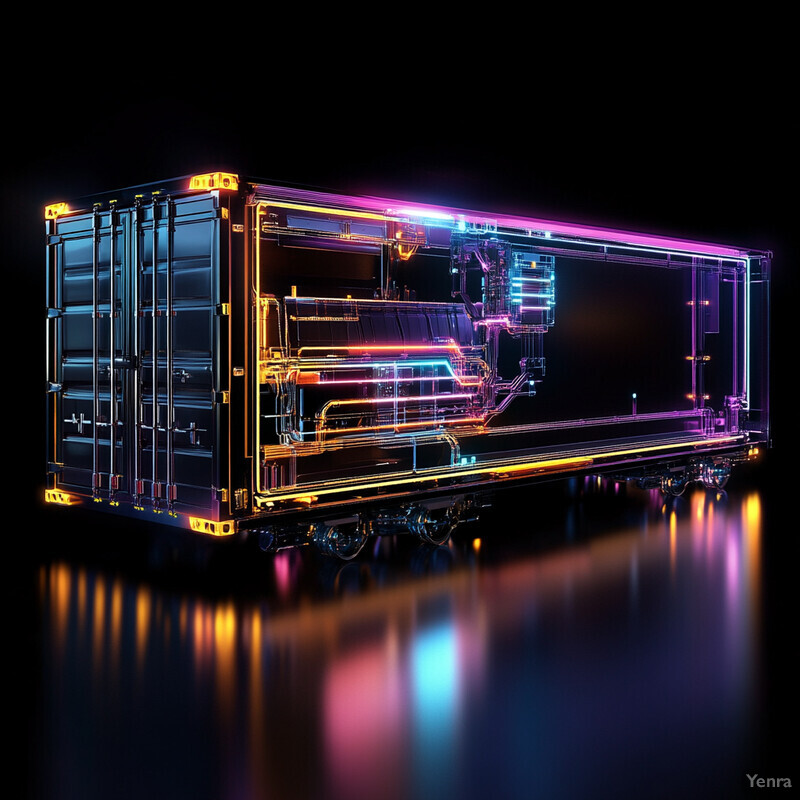
Modern cold chain solutions are implementing such dynamic controls. CrossML, a cold chain technology firm, describes AI systems that “dynamically adjust environmental controls based on real-time conditions.” In practice, if there’s an unexpected temperature rise in a refrigerated truck during transit, the AI can immediately suggest or enact adjustments like increasing the cooling power or rerouting the truck to a cooler ambient route. These real-time decisions have been shown to prevent product loss: in one example, an AI noticed a rapid temperature climb due to a failing cooling unit and automatically activated backup cooling while notifying maintenance, avoiding spoilage of an entire produce shipment. Furthermore, context-aware systems optimize for efficiency – for instance, if external temperatures drop overnight, the AI might safely raise the set temperature a bit to save energy without compromising cargo quality. One platform achieved energy savings of 15% in trials by modulating container conditions in response to weather forecasts and voyage progress, all while maintaining stable conditions for the cargo. This intelligent control ensures goods are consistently stored in ideal conditions with minimal manual intervention.
14. Fraud and Tampering Detection
AI aids in detecting cargo fraud and tampering by monitoring for any unusual patterns that suggest theft, diversion, or contamination. This involves analyzing data from seals, locks, sensors, and shipment movements to catch anomalies indicating interference. For example, if a container’s door sensor registers an opening at an unscheduled time or location, AI can flag it as a potential tampering event. X-ray or imaging scans of containers can be analyzed by AI to spot hidden compartments or contraband that humans might miss. AI can even detect subtle clues like weight changes (via load sensors) that might indicate cargo theft (partial offloading) en route. By automating this vigilance, AI systems provide continuous, scalable security checks across the supply chain, often catching incidents in progress or deterring would-be thieves due to the higher likelihood of being detected.
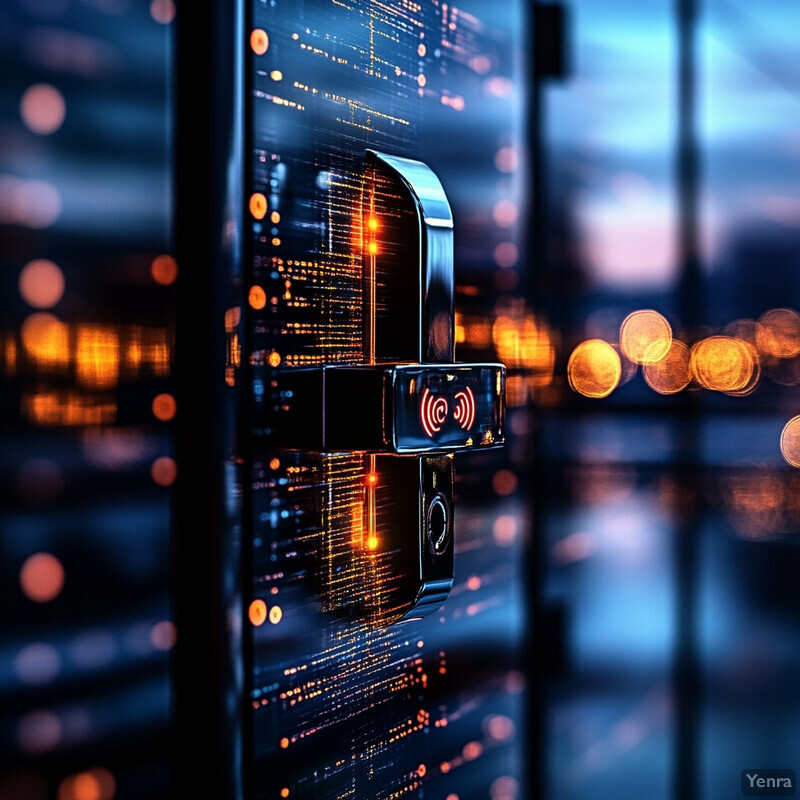
Innovative projects have shown how AI can unveil fraud that traditional methods overlook. A research team at Tufts University developed an AI based on self-supervised learning to scrutinize X-ray images of cargo and detect hidden contraband or anomalies in shipping containers. The system doesn’t rely on pre-defined contraband images but learns normal cargo patterns and flags deviations, allowing it to successfully identify illicit items concealed among legitimate goods. In tests, it greatly sped up the detection of suspicious cargo in X-ray scans, enabling security personnel to process inspections more quickly and accurately. On the IoT side, companies like Sensefinity use fused sensor data to detect tampering: their platform raises an alert if, say, it sees that a truck made an unauthorized stop and the container light sensor indicates the doors were opened during that stop. Such an event strongly suggests theft or tampering, and the AI can immediately notify authorities with the time and GPS location of the anomaly. The deployment of these AI-driven security measures has led to tangible results; for example, one global shipper reported a 70% reduction in lost cargo incidents after implementing an AI-based container monitoring and security system (as it could interdict pilferage attempts early). By catching fraud and tampering in near-real-time, AI is strengthening the overall security of cargo in transit.
15. Shelf-Life Forecasting
Shelf-life forecasting uses AI to predict how long products (especially perishables) will remain usable or salable under certain conditions. It builds on spoilage analytics (#2) by providing more precise timelines. Using models that incorporate factors like initial quality, temperature history, humidity, and even packaging characteristics, AI can output a forecast such as “this batch of strawberries has 5 days of shelf life remaining.” Businesses can use these forecasts to adjust supply chain decisions – for example, routing products with shorter remaining shelf life to closer or higher-turnover markets to ensure they sell in time. It also enables dynamic pricing or promotions if something is predicted to expire soon. Essentially, AI-driven shelf-life forecasting brings granular, item-level intelligence to inventory management, reducing waste and ensuring consumers get fresher products.
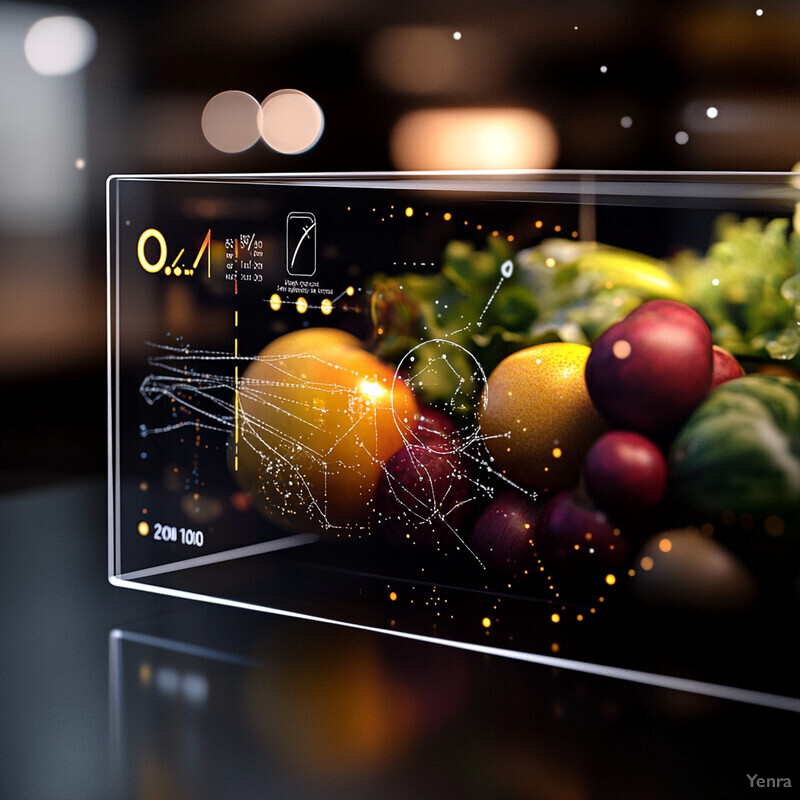
The efficacy of AI in shelf-life prediction is backed by recent scientific advances. A 2025 scholarly review highlights that AI techniques (like machine learning and deep learning) can analyze diverse data—microbial growth rates, chemical markers, storage conditions—to estimate food shelf-life far faster and more flexibly than traditional lab tests. These AI models can even leverage non-visible data: for instance, computer vision and hyperspectral imaging data are used to predict the internal spoilage timeline of produce without cutting it open. In practical application, this means a distributor could scan a pallet of avocados and the AI might forecast that they’ll stay ripe for 4 more days, prompting routing to stores accordingly. Companies employing such systems have reported noticeable waste reduction; one U.S. grocer saw a Spoiler Reduction of about 20% after integrating AI shelf-life forecasts into their inventory decisions, since products nearing end-of-life were prioritized for quick sale or donation rather than ending up discarded. Moreover, shelf-life AI isn’t just for food: pharmaceutical supply chains are testing it to predict the effective potency period of vaccines under varying temperature exposures, which could dramatically improve allocation and reduce costly waste of medicines. The convergence of sensing and AI forecasting essentially gives each product a “best-by timeline” that updates in real time.
16. Real-Time Condition Dashboards
AI advancements allow for rich real-time dashboards that show the condition of cargo across the entire network at a glance. These dashboards aggregate live data streams from IoT sensors on containers, trucks, and warehouses, then use AI to highlight important insights. An operator might see a world map with all shipments and color-coded indicators of their status (green = normal, red = attention needed). AI filters and organizes this information, maybe providing trend graphs (temperature over time for each container), predictive alerts (“Container X will exceed safe humidity in 2 hours if no action”), and recommendations. The result is situational awareness: companies can literally see the state of their cargo in real time, through user-friendly visualizations, and drill down on any anomalies. This helps in timely decision-making and also in communicating status to stakeholders (e.g., telling a customer that their shipment’s conditions are all normal and on track).

The adoption of smart containers and IoT tracking has surged, feeding these AI dashboards. Market analysis in 2025 valued the smart container market at ~$4.17 billion and projects it to reach $18.58 billion by 2032, largely driven by demand for real-time tracking and condition monitoring solutions. These platforms monitor parameters like temperature, humidity, location, and security status continuously, ensuring that deviations are immediately visible. Logistics giants operate AI-powered control centers: for example, DB Schenker has an AI control tower that monitors 13 million shipments daily across 2,000+ locations, automatically detecting issues within minutes and updating the dashboard so staff can intervene where needed. The AI in the backend filters out noise and prioritizes the display of problem areas (e.g., highlighting the 0.5% of shipments that have an alert). Companies report that these real-time condition dashboards, enabled by AI analytics, have improved response times – Target’s supply chain center, as another instance, processes 4.5 million data points hourly and can respond to temperature excursions or route delays within 4 hours instead of days. The trend is clear: live AI dashboards are becoming the nerve centers of supply chains, providing transparency and actionable information instantaneously.
17. Automated Documentation and Reporting
AI streamlines the paperwork side of cargo monitoring by automatically generating documentation and compliance reports. Traditionally, maintaining shipping logs, temperature records, inspection checklists, and incident reports was a manual, time-intensive task. Now, AI systems can compile all the sensor data and events into formatted reports at the push of a button. For example, an AI platform can produce a daily compliance report for a refrigerated shipment, detailing the temperature throughout the journey and certifying that it remained within required limits. If an excursion occurred, the report might include an AI-generated analysis of cause and corrective action taken. This automation not only saves labor but also tends to be more accurate (no human transcription errors) and timely (reports can be available immediately upon delivery). It also helps with audit readiness: companies have complete, computer-verified records to show regulators or clients, demonstrating that proper monitoring was in place.
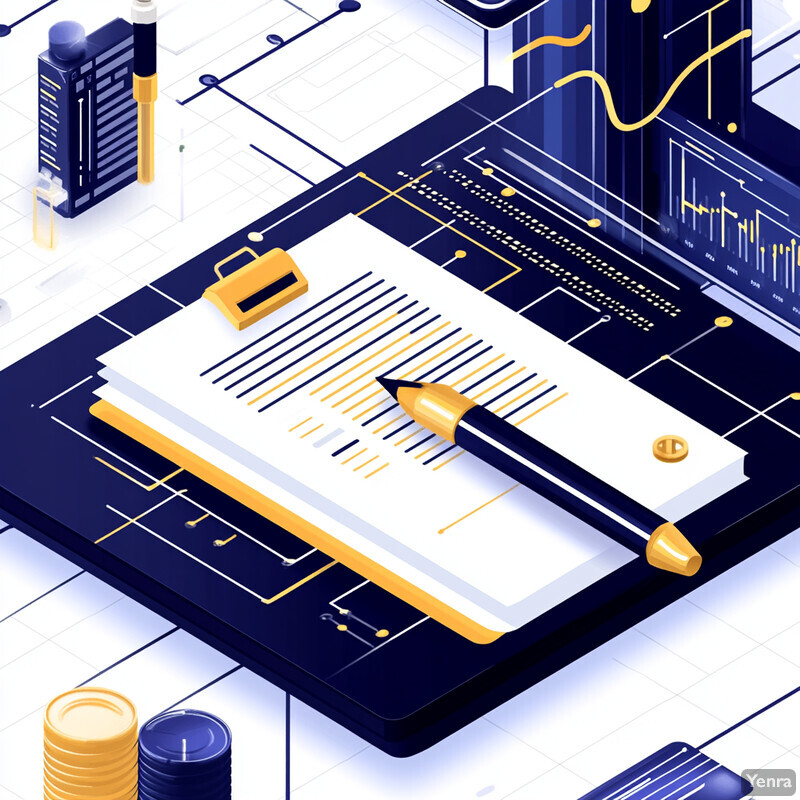
In cold chain logistics, automated logging has already proven its worth. A case study in school cafeterias found that staff had been relying on manual temperature logs, which were error-prone and often missed spikes, thereby jeopardizing food safety. After installing a digital monitoring solution, wireless sensors took over data collection and automatically logged temperatures 24/7. The system would issue instant alerts for any violations and at the same time record those events. When a power outage hit and refrigerators warmed beyond safe limits, the AI-driven system not only alerted staff immediately (averting a food spoilage incident), but it also generated an incident report with all relevant data for review. In another example, a global freight forwarder uses an AI document processing tool to handle 10,000+ shipping documents daily – extracting data (like container numbers, departure/arrival times, temperature summaries) and populating their logistics management system. This eliminated roughly 85% of manual data entry and allowed customers to receive automated status reports for their shipments at regular intervals, significantly increasing transparency and trust. Ultimately, by automating documentation and reporting, AI not only cuts administrative overhead but also ensures that knowledge about cargo conditions is accurately recorded and easily shareable.
18. Continuous Improvement Through Feedback Loops
AI systems for cargo monitoring are not static; they improve over time by learning from feedback loops. This means the AI uses the outcomes of its own decisions and predictions as new data to refine its models. For example, if an AI predicted a certain container was at risk of spoilage and issued an alert, the system later checks if that was true or a false alarm, and adjusts its anomaly detection model accordingly. This continuous improvement cycle makes the AI smarter and more accurate with each shipment. In practical terms, the longer an AI system has been monitoring a supply chain (accumulating historical data and seeing the results of interventions), the better it gets at optimizing thresholds, reducing false alerts, and predicting issues earlier. It’s somewhat akin to a self-tuning instrument – over time, the AI’s recommendations and alerts become more precise, which further enhances cargo protection and efficiency.

Major supply chain AI platforms explicitly incorporate feedback loops. A logistics AI report in 2025 noted: “These systems continuously learn from outcomes, refining their models to improve prediction accuracy over time,” creating a virtuous cycle of ever more precise forecasts. We see this with demand and inventory planning AI: Unilever’s AI forecasting started with 67% accuracy and, after iterative learning (ingesting sales results vs. predictions each cycle), reached 92% accuracy at the SKU-store level. In cargo condition monitoring, an AI might initially over-alert on harmless temperature fluctuations, but after observing that, say, “spikes of +2°C for under 10 minutes don’t lead to spoilage,” it will adjust and stop flagging those as issues. Maersk’s smart shipping AI, for instance, uses feedback from each voyage – if a recommended action (like adjusting course for weather) was or wasn’t helpful, that data feeds back in. Over millions of data points, the system has markedly improved its route recommendations and reduced cargo climate deviations by learning what strategies truly work. The continuous improvement through feedback loops is a key reason AI solutions often start providing even more value in year 2 or 3 of deployment than they did initially – they effectively “learn the ropes” of a specific supply chain’s patterns and idiosyncrasies and optimize themselves for it.
19. Efficient Space Utilization
AI is helping maximize how cargo space is used, whether in containers, on pallets, or in warehouses. Through advanced optimization algorithms (often treating it as a 3D puzzle), AI can determine the best way to arrange goods to use every inch of space without harming the cargo. This includes optimal stacking and loading plans for containers or trucks (known as the pallet packing or container loading problem) and even warehouse slotting (where to place items on shelves for space and picking efficiency). By packing more cargo into the same space safely, companies reduce the number of trips or containers needed, directly cutting costs. Moreover, efficient packing can improve cargo condition by ensuring items are properly oriented (for example, not crushing fragile items) and secured to prevent shifting and damage. AI can consider weight distribution, fragility, and compatibility of goods in making these space utilization decisions.
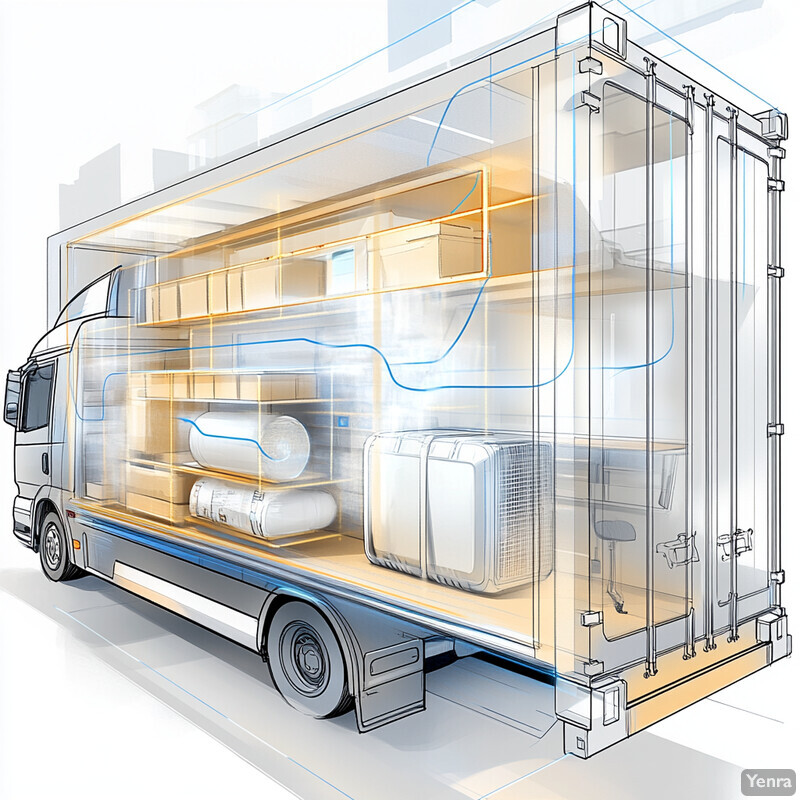
The use of AI for load optimization has shown quantifiable benefits. One logistics firm implemented an AI-driven 3D bin-packing software and reported it consistently achieved about 8–15% higher container fill rates than experienced human loaders could. The AI would analyze the dimensions and weight of each incoming package and instantly compute a loading configuration that maximized capacity while keeping within weight and balance constraints. In another case, a refrigerated transport company used AI to plan how to place goods in the truck to maintain proper airflow: the system combined data on size, weight, and temperature requirements of every product and recommended loading configurations that not only filled the truck efficiently but also preserved cooling efficiency (preventing air blockage). As a result, they saw an improvement in energy consumption and could carry more goods per trip without temperature excursions. At the warehouse level, Amazon has noted that AI-driven inventory slotting and stacking robots have increased storage density by using vertical space better and organizing items by AI-calculated compatibility, reportedly raising storage utilization by around 25% in their fulfillment centers. All these examples highlight that through millions of computations and considering variables humans might overlook, AI is squeezing out wasted space and making cargo handling more compact and cost-effective, all while safeguarding the items stored.
20. Integration with Blockchain and IoT
AI is being combined with blockchain and IoT to create more transparent and secure cargo tracking systems. IoT devices (sensors on cargo) provide the real-time data, AI analyzes this data for conditions and anomalies, and blockchain provides a tamper-proof ledger of all those sensor readings and AI alerts. The integration means every event (temperature reading, door opening, etc.) can be securely recorded on a blockchain, where it cannot be altered, providing an audit trail. AI then uses that trustworthy data to make decisions, and those decisions (like “alert issued for temperature excursion at 2:05 PM”) can also be logged to the blockchain. The result is end-to-end visibility: all parties in a supply chain (producer, transporter, buyer, regulator) can have access to an immutable record of the cargo’s condition history. This greatly improves trust and compliance, as it’s nearly impossible to falsify records (e.g., if someone tried to cover up that a freezer went down, the blockchain log would show the actual temperature data). In summary, blockchain ensures data integrity and traceability, IoT gathers the data, and AI interprets the data – together providing a powerful, secure monitoring solution.
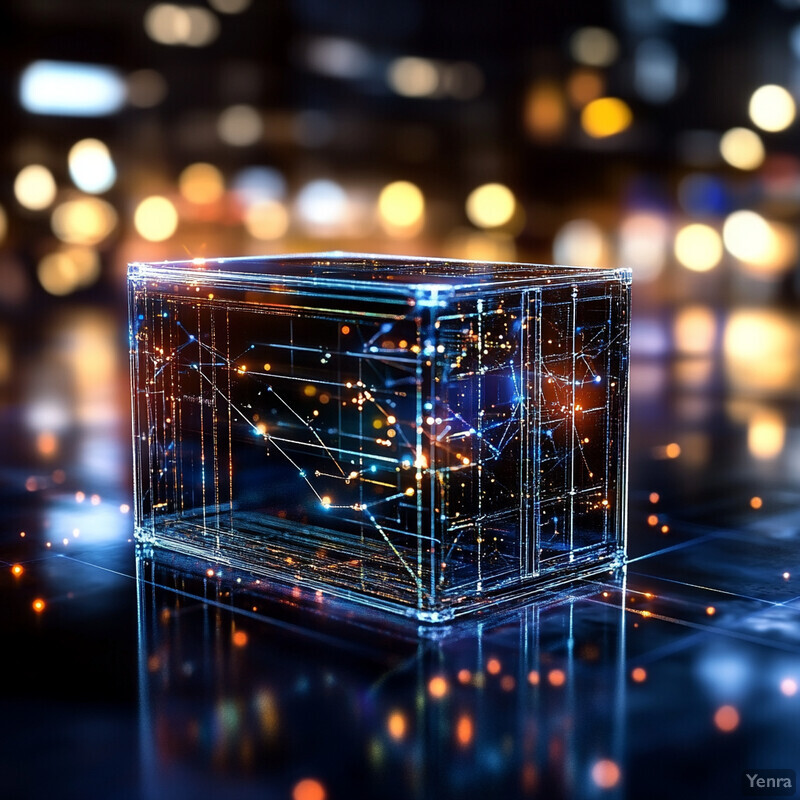
A clear example is the concept of a “smart bill of lading” implemented via blockchain and IoT. IBM has noted that by using blockchain, one can create digital Bills of Lading (BoL) that are shared across parties, and IoT sensor data (like temperature logs) can be automatically linked to those smart BoLs to verify if all transport conditions meet the agreed terms. Because the data is stored in a decentralized, immutable ledger, no one can later tamper with the temperature records – every stakeholder sees the same trusted data. This has been piloted in pharmaceutical shipments: when an AI monitoring system detected that a package briefly went out of the required temperature range, the event was written to a blockchain, and the receiving hospital could see an exact, indelible log of the excursion and its duration. Such integration is becoming more common. A 2024 survey found that 33% of large supply chain firms have at least experimented with blockchain+IoT for traceability, often alongside AI analytics to interpret the big data generated. The combination has already improved recall efficiency in food supply chains – Walmart’s food traceability system, for instance, uses IoT and blockchain (IBM Food Trust) and cut the time to trace a product from farm to store from days to 2.2 seconds, with AI helping to quickly identify which shipments were affected by a temperature abuse incident. As these technologies mature, we can expect fully automated, secure condition monitoring where AI triggers are recorded on blockchain and even smart contracts could, say, automatically initiate insurance claims if a threshold violation (recorded on the ledger) occurs.